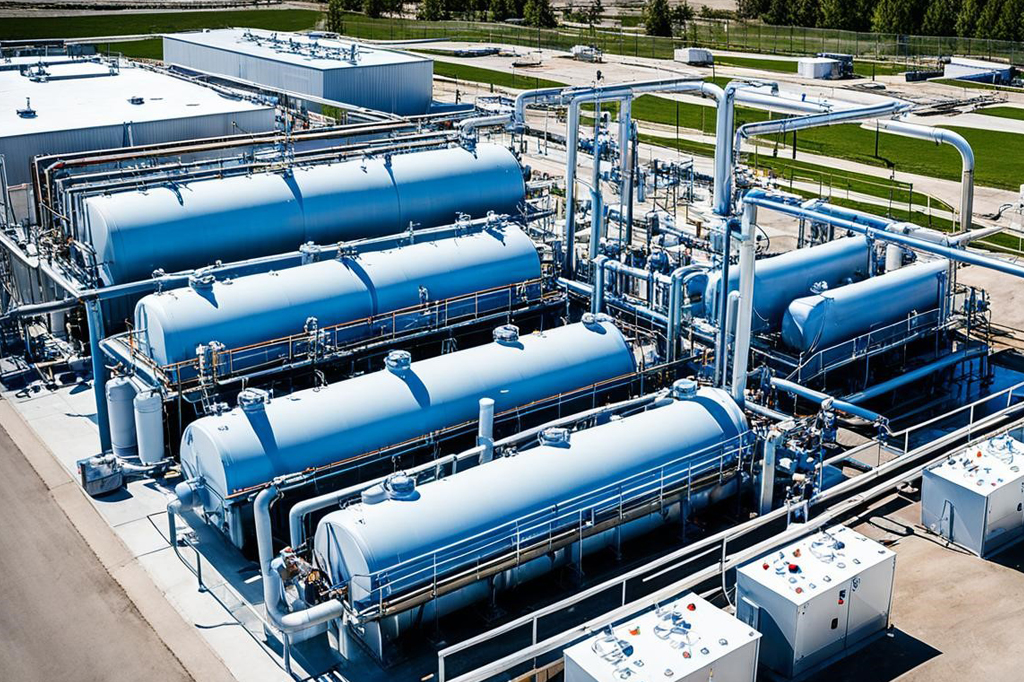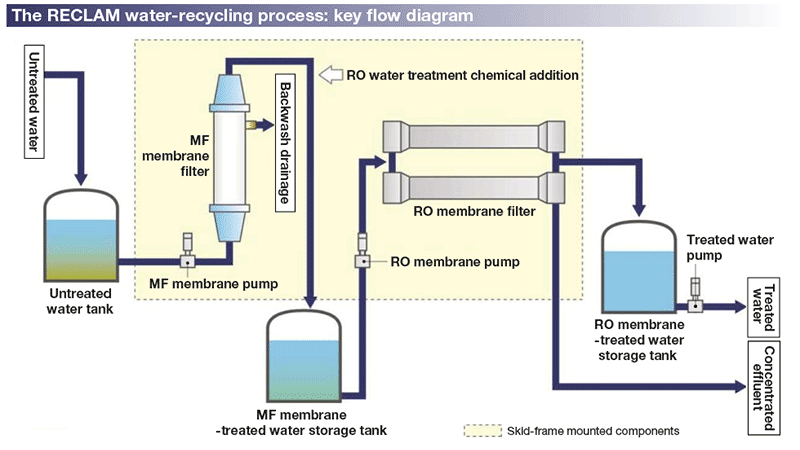Technologies and Developments in Industrial Waste Water Therapy Technologies
The landscape of industrial wastewater treatment is undergoing a transformative shift, driven by developments that improve both effectiveness and sustainability. As regulative requirements progress, the combination of AI and maker discovering right into wastewater administration systems guarantees to make sure and enhance operations compliance.
Summary of Waste Water Treatment Technologies
Wastewater therapy modern technologies incorporate a variety of techniques developed to remove contaminants from commercial effluents prior to their release into the setting. These innovations are vital for preserving ecological equilibrium and making certain compliance with environmental laws. The key classifications of wastewater treatment consist of physical, chemical, and biological methods, each offering unique purposes based upon the nature of the pollutants present.

Biological therapy techniques utilize microorganisms to deteriorate raw material, making them particularly reliable for organic-rich effluents. Techniques like triggered sludge and biofilm activators harness the all-natural degradation capabilities of germs, causing substantial decreases in biochemical oxygen need (BOD)
Advanced Filtration Techniques
Advanced filtering methods represent an essential evolution in the realm of industrial wastewater treatment, enhancing the efficiency of contaminant removal processes. Industrial Waste Water Treatment. These methods encompass a range of technologies, including microfiltration, ultrafiltration, nanofiltration, and turn around osmosis, which provide consecutive obstacles for numerous fragment dimensions and chemical frameworks
Microfiltration and ultrafiltration use membrane systems to remove suspended solids, microorganisms, and bigger natural molecules, enhancing the quality of effluent prior to more therapy. Nanofiltration connects the space between ultrafiltration and reverse osmosis, properly getting rid of organic substances and divalent ions, hence minimizing the tons on downstream processes.
Reverse osmosis offers the highest degree of purification by allowing just water and little molecules to pass through its semi-permeable membrane layers, making it excellent for redeeming top notch water from industrial effluents. Current improvements in membrane technology, consisting of the advancement of more sturdy and fouling-resistant materials, have actually considerably improved functional performance and decreased costs.
Including these advanced purification methods not just improves the overall therapy process however also adds to sustainability efforts by making it possible for water reuse and resource recuperation in industrial setups. (Industrial Waste Water Treatment)
Biological Treatment Innovations

Moreover, the advancement of crafted organic systems, such as membrane bioreactors (MBRs), incorporates biological treatment with innovative membrane purification. This combination allows for greater effluent quality and lowered impact, making recommended you read it suitable for space-constrained commercial facilities. Technologies in genetically engineered microbes have additionally emerged, boosting the biodegradation of certain contaminants, such as drugs and hefty metals, that are commonly challenging to get rid of.
Furthermore, the execution of bioaugmentation techniques, where beneficial microorganisms are presented to improve the existing organic treatment processes, has actually shown appealing lead to improving therapy efficiency. These developments collectively represent a pattern in the direction of even more sustainable and efficient organic therapy approaches that can adapt to the advancing intricacies of commercial wastewater streams. As markets proceed to focus on environmental conformity, these organic innovations will play an essential role in wastewater administration.

Source Healing Methods
In commercial settings, the assimilation of source recovery approaches has come to be progressively vital for boosting sustainability and lessening waste. These methods concentrate on extracting beneficial materials and power from wastewater streams, thus changing prospective toxins into multiple-use resources.
One noticeable method is vitamins and mineral healing, where nitrogen and phosphorus, often present over in Website wastewater, are captured and exchanged fertilizers. This not just decreases ecological impacts yet also supplies a round economic climate remedy for agricultural applications. Furthermore, modern technologies such as anaerobic digestion enable the conversion of natural waste into biogas, a renewable resource source that can balance out fossil gas usage in industrial operations.
Moreover, progressed filtration and membrane innovations promote the recovery of industrial spin-offs such as steels and salts. These recovered materials can be reintegrated into manufacturing procedures, lowering the try these out requirement for virgin resources.
Future Patterns in Drainage Monitoring
As sectors increasingly prioritize sustainability, the future of wastewater management is set to go through considerable makeovers. Technical innovations, such as artificial intelligence and device knowing, will allow a lot more reliable surveillance and monitoring of wastewater systems. These modern technologies can forecast upkeep requirements, enhance treatment processes, and enhance decision-making, ultimately reducing operational prices and ecological influence.
Additionally, the assimilation of round economic climate principles will play a crucial duty in wastewater monitoring. Industries are anticipated to move towards systems that not only deal with wastewater yet likewise recover valuable sources, such as nutrients, water, and power. This shift will decrease waste and advertise the reuse of materials, aligning with international sustainability objectives.
Emerging therapy methods, such as membrane bioreactors and progressed oxidation procedures, will further boost the efficiency of wastewater treatment, permitting for better effluents ideal for reuse. Furthermore, regulatory structures are likely to advance, highlighting stricter criteria for wastewater discharge and encouraging sectors to embrace innovative therapy solutions.
Verdict
Finally, the advancement of industrial wastewater therapy innovations shows a considerable change towards boosted effectiveness and sustainability. Innovations in sophisticated purification methods, organic treatments, and source recovery techniques highlight the sector's commitment to ecological stewardship. The integration of expert system and device understanding even more maximizes these processes, making sure regulatory compliance and advertising a round economic climate. Proceeded innovations in these areas will play a critical role in forming the future of wastewater monitoring and securing crucial water sources.
The landscape of industrial wastewater treatment is going through a transformative shift, driven by advancements that improve both performance and sustainability.Wastewater therapy modern technologies incorporate an array of approaches made to eliminate impurities from industrial effluents prior to their launch right into the setting.Using the power of organic procedures has actually led to considerable advancements in the treatment of industrial wastewater.Additionally, the implementation of bioaugmentation strategies, where advantageous microbes are introduced to boost the existing organic treatment processes, has revealed encouraging results in improving treatment efficiency. These advancements collectively represent a trend in the direction of even more sustainable and efficient biological treatment techniques that can adjust to the developing complexities of commercial wastewater streams.